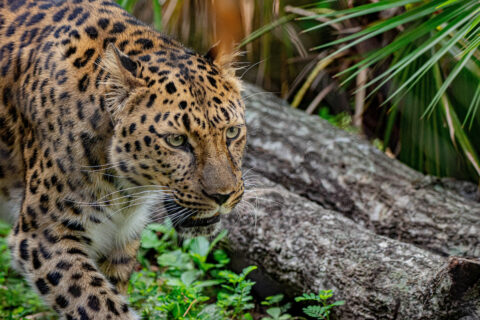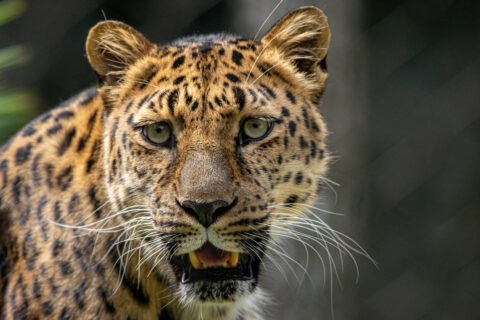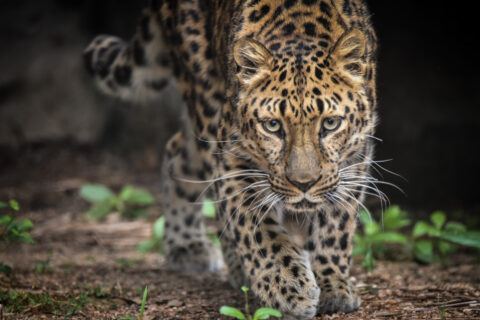Spot One of the Rarest Big Cats in the World
Houston Zoo Welcomes Female Amur Leopard

The Houston Zoo recently welcomed a 13-year-old female Amur leopard named Lisa. She was born on October 8, 2010, at Saint Louis Zoo and spent a decade living at Brookfield Zoo Chicago before moving to Houston. She is an experienced mother and has had three litters, with one of her previous cubs, Sasha still residing at Brookfield Zoo Chicago. Born with the name Anastasia, her animal care team nicknamed her Lisa as her mom was named Mona and the pair were affectionately known as “Mona Lisa.”

Last week, Lisa made her debut in her new habitat (previously the vultures’ habitat) next to cougars, Shasta VII and Louie. Guests can usually spot her lounging on the rockwork for a few hours in the morning. She will continue to have access to her bedroom area throughout the day as she adjusts to her new surroundings and when temperatures may exceed her comfort level. During the warmer months, Lisa will have a summer coat that is about 3cm long, along with plenty of areas to stay cool including fans, misters, and a waterfall feature. In the short time since her arrival in Houston, her animal care team has learned about her confident, curious, and sassy personality and that she is very food-motivated, with her current favorites being chunk meat and rabbit.

With less than 100 Amur leopards left in the wild, they are one of the rarest big cats in the world and are critically endangered. Native to coniferous-deciduous forests and mountains of eastern Russia and northern China, Amur leopards are named after the Amur River, which is the tenth longest river in the world. This big cat lives the furthest north of the nine subspecies of leopard in the wild and sometimes shares territories with the Amur tiger. However, to avoid contact with Amur tigers, they are known to carry and hide their unfinished prey from predators. Similar in size to other leopards, they can run up to 35mph but have longer legs and larger feet to help walk through snow environments more easily.
The decline of their population in the wild is due to many factors including habitat loss, poaching, and human encroachment. Guests can help save Amur leopards in the wild when they use their digital pass to visit Lisa at Houston Zoo. The Houston Zoo saves animals in the wild that live in forest habitats by using a paperless ticketing system. The Zoo also uses recycled toilet paper products throughout the Zoo. Amur leopards and other wildlife need trees to survive, and by using less paper or recycled-content paper products, fewer trees are cut down and we are protecting forest habitats for animals in the wild.
